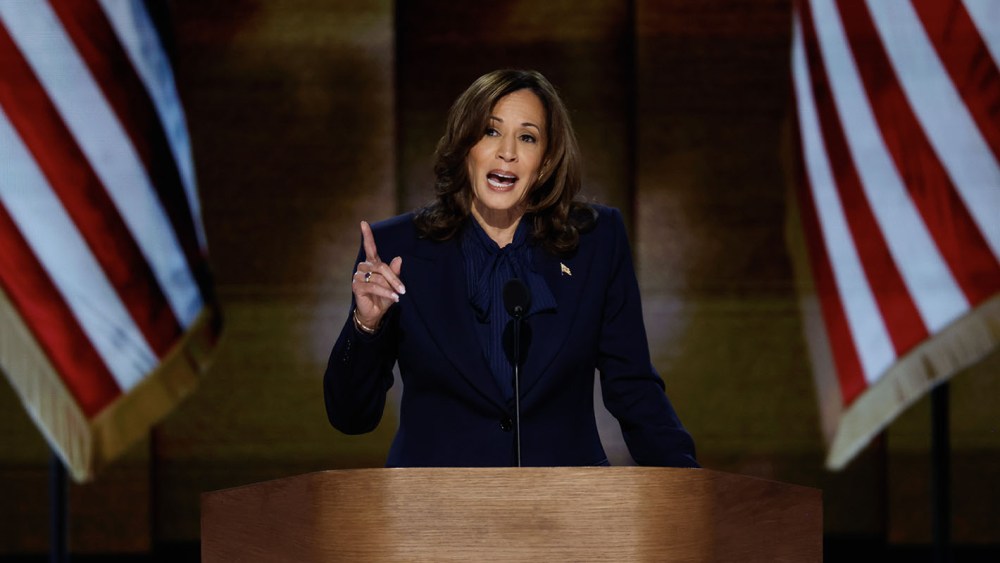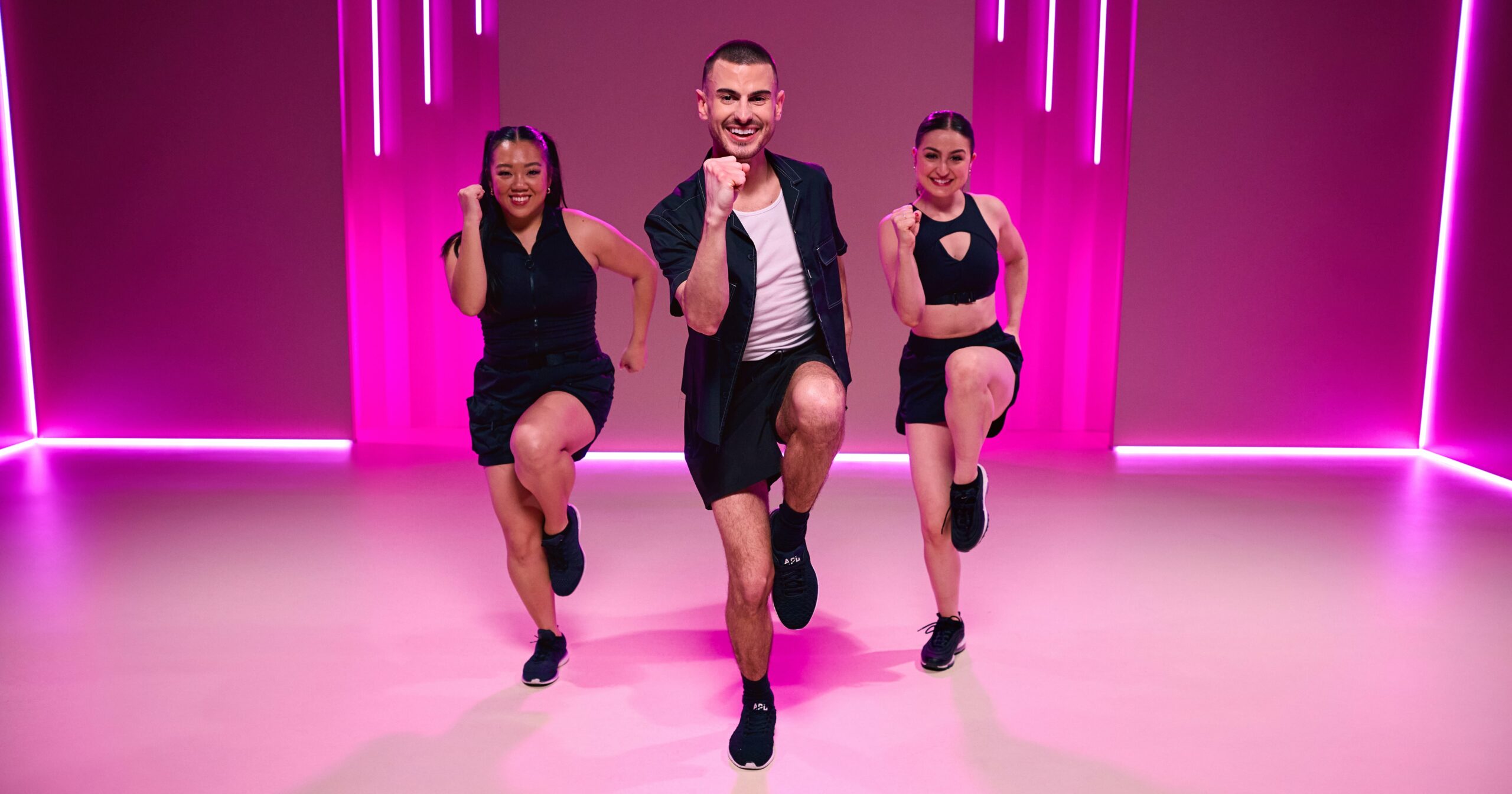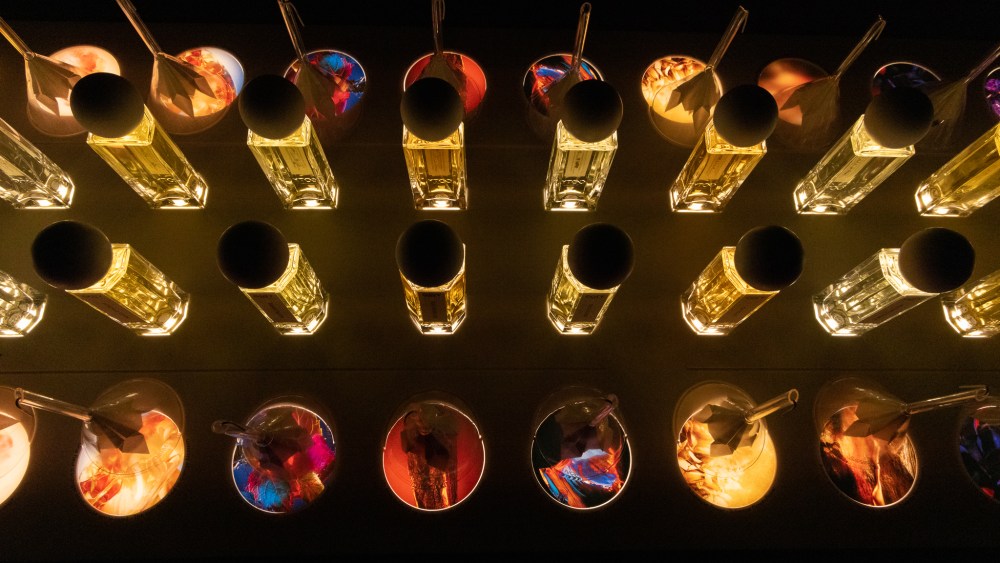Just as Democratic presidential nominee Kamala Harris’ acceptance speech at the Democratic National Convention had multiple messages, so too did the Chloé navy suit she wore.
That was the takeaway from five fashion authorities, who largely praised — but in some instances questioned — the choice of a French label for an American presidential candidate. Harris had also sported a Chloé suit with a pussy-bow blouse at the DNC earlier in the week. Both ensembles were designed by the luxury house’s creative director Chemena Kamali, who succeeded Gabriela Hearst, one of First Lady Jill Biden’s favorite designers.
Executives at Chloé did not respond to media requests Friday, nor did they Tuesday. But a handful of fashion observers broke down Harris’ latest designer choice and speculated about what it may have conveyed to voters and the world at large.
You May Also Like
The fact that Harris chose not to wear the more expected all-white pantsuit, which female politicians and activists have donned as an homage to the women’s suffragette movement for key photo-ops, resonated with some. That look also has been tied to the #MeToo movement and in opposition to sexual violence, according to Richard Ford Thompson, the author of “Dress Codes: How the Laws of Fashion Made History.”
Harris’ midnight blue suit was also a departure from the bright-colored, conservatively tailored pantsuits worn by other leading female political figures like former U.S. Secretary of State Hillary Clinton and even further back to former U.K. Prime Minister Margaret Thatcher, said Ford, a law professor at Stanford University Law School.
“It had significance. Kamala’s suit felt to me like a power move. She was going to wear a dark navy blue suit like men would wear and she wasn’t afraid of leaning into that. In one sense, she was emphasizing that she would [potentially] be the first woman president. She was just all-business.”
In addition, her choice of the tonal pussy-bow blouse, which added a feminine touch but also blended in, made a dramatic statement, according to Ford.
Unfazed by the decision to wear a European label, Ford said, “It’s true that candidates for national office have taken great care to make sure they’re wearing American designers or things that are American made. But my gut reaction is that she’s got a designer that she’s comfortable with so that’s what she was going to wear.”
Designer Stan Herman described Harris’ suit as “the perfect choice. Blue is America’s color.”
Having created uniforms for Jet Blue and other major companies for decades, Herman said he knows from that experience that “blue wins out almost twice as much as any other color” whenever he has offered color options to everyday people for uniforms. He added, “I can’t say enough about the color navy blue. It represents both the future and the present in a way that most colors just don’t. It’s also a friendly color. It never stalks you or makes you feel uncomfortable.”
Enthusing about the rich navy blue one-button blazer that Harris wore, the designer said “the beautiful part was that her blouse was slightly off-color so that it blended rather than matched. That gave her a nice neckline.”
One critique was Harris’ boot-cut pants. Herman said, “I think she looked young in it, but I would prefer a slightly straighter leg on her.”
As for Harris’ choice of a French label, Herman said he would have preferred that she had worn an American designer. “It would have been perhaps more politically correct. But I think she will learn that now she has become a beacon to fashion, they will be criticizing her every minute. I think she’s going to find that there are lots of American designers who will fit her and will work with her,” Herman said. “Again, I wish it had been an American designer but I’m not devastated by it.”
Sergio Hudson and Christian Siriano, two New York-based designers who have suited up Harris in the past, declined to comment Friday about the vice president’s choice of a non-American designer. A representative for Prabal Gurung, who also has worked with Harris in the past, did not respond to a request for comment Friday. Hudson and Gurung are among the dozen or so American designers who have created merchandise to support the campaign of Harris and her running mate Tim Walz.
“Fantastic” was how Valerie Steele, the director of the Museum at the Fashion Institute of Technology, sized up Harris’ pantsuit, which she said relays “a very simple statement about competence, professionalism and acceptance of the idea of a powerful, confident woman.” She also praised Chloé’s Kamali for “showing that she’s as good at tailoring a really beautiful powerful suit as she is at the very bohemian, feminine looks that she’s been most famous for.”
In addition, the suit for women has been “a marker for female equality” since the latter part of the 19th century. Although its origins from the male wardrobe are undeniable, pantsuits or skirt suits now assert the same level of professionalism for women, according to Steele.
Harris’ preference for pantsuits probably will have an effect on trends, Steele said. “That is what fashion is about — it just hoovers up every great look and it copies it. If someone who’s fabulous is wearing a fabulous look, then it’s twice as likely that the fashion world will copy it. But in a larger sense Kamala in that pantsuit transcended fashion to make a statement about dress, identity and associating herself with the idea of [being] someone who was presidential and professional.”
The Democratic candidate’s choice of a non-American label is “a non-issue” from Steele’s point of view. “Fashion is a global industry. People from all over the world are involved in every company. Chloé is based in France and Monse [which Michelle Obama wore Tuesday night at the DNC] is based in the U.S. But you have people on those teams from everywhere in the world and a clientele that is everywhere in the world,” said Steele, adding that Harris, like Obama, has supported American brands and young American designers.
“It’s clear that Kamala is looking out for fashion that speaks to her and is good for her regardless. That’s probably what everybody in the fashion world wants. You want to be treated as a player on the basis of your own work,” Steele said.
The Brooklyn Museum’s senior curator of fashion and material culture Matthew Yokobosky was glad that Harris opted not to wear an all-white pantsuit as a nod to the suffragette movement. Harris’ navy suit “really mirrored” what men have worn to accept the presidential nomination, he said. “People have talked about the fact that she doesn’t want to be known for her fashion. She wants the focus to be on what she’s talking about. Yet she has been making quiet fashion statements like with the beige [Chloé] suit that she wore at the DNC. It was tasteful and attractive.”
When Harris walked across the main stage at the United Center Thursday night wearing all blue amid the dark backdrop, that drew greater attention to her face and gave people the opportunity to see her smile and her manicure, Yokobosky said. “It was a smart move and she’s been making a lot of smart choices ever since she was nominated.”
That said, he felt mixed about the choice of a non-American designer. “I always want our American presidents and first ladies to champion American designers, who can always use a boost. It’s not like we don’t have great American designers. Kamala easily could have worn Tom Ford, for example,” Yokobosky said. “It’s not like there are not great American designers either. I’m sure Diane von Furtsenberg or Norma Kamali would have loved dressing her.”
He speculated that the Chloé connection could have been made via Gabriela Hearst given she is one of Dr. Jill Biden‘s favorite designers. “It’s not that a presidential candidate couldn’t easily get into a designer’s atelier. But when you have an introduction, you get better service, right?”
Heather Akou, an associate professor of fashion design at Indiana University, noted that in the U.S., navy blue is strongly associated with the military and police, while pinstripes, which were tonal in Harris’ blouse, are associated with the banking industry. That combination conveyed a message of stability, power and trustworthiness, she said. “For some people, this will land; for some it will not. It depends on how they feel about the military, police and banking industry and Harris’ career as a prosecutor.”
While many American presidents, starting with George Washington, have made a point of wearing American-made clothing to support American industry and culture, Akou wondered if the European origins of Harris’ Chloé suit was intended to “convey her support for NATO.”



